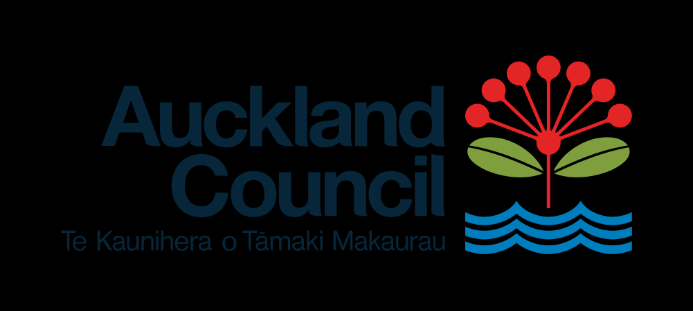
26 August 2020
LGOIMA No. 8140007203
(Please quote this in any correspondence)
J Bruning
Sent by email
: [FYI request #13414 email]
Tēnā koe Jodie
Local Government Official Information And Meetings Act 1987
Glyphosate and AMPA in soil and water
Thank you for your request for information, which we received on 29 July 2020 about
information Auckland Council holds on the use of Glyphosate.
For your ease of reference, I have included your questions in the response below.
“Please supply emails, reports, memos or submissions discussing:
1. The soil half-life (the time taken for half of the herbicide to degrade), of glyphosate
and its metabolite AMPA which is estimated by European Food Safety Authority to be
Low to very high (DT50 = 2.8 – 500.3 d) b). Laboratory results of testing in public
parks, roadsides and drains of soil for glyphosate or AMPA to establish half-life under
New Zealand conditions in public areas. Laboratory tests would include screening
results for companion herbicides commonly applied with glyphosate to manage weed
resistance.
2. Greater health risk to pregnant mothers, babies and children from low-level
exposures.”
The council’s agrichemical use is guided by the New Zealand Environmental Protection
Agency (EPA) in their role as the regulator of hazardous substances in New Zealand. The
EPA has granted approval for the use of glyphosate-containing substances in accordance
with the code of practice. Council does not conduct its own testing.
We haven’t found email, submissions, or advice shared among council staff about
persistence of glyphosate and AMPA in soil and water. Therefore, in accordance with
section 17(e) of the Local Government Official Information and Meetings Act 1987, some of
the information you have requested cannot be provided to you on the basis that it does not
exist or despite reasonable efforts to locate it cannot be found.
However, we have provided a memo explaining Auckland Council weed control
methodologies. Please refer to attachment
1. Memo to all councillors.
Private Bag 92300, Auckland 1142 |
aucklandcouncil.govt.nz |
Ph 09 301 0101
3. The length of time that signage is left out to inform the public and the discrepancy
between the soil half-life and the time signage is left out. Or instances where there is
no signage and the glyphosate formulation is sprayed.
For all agrichemical use, council contractors comply with the Environmental Protection
Agency Code of Practice (NZS 8409:2004 Management of Agrichemicals) for the storage,
mixing, use, disposal, and certification of contractors for agrichemicals.
As per the requirements of the code of practice, signage is displayed when our contractors
are spraying, so the public is kept informed. The signs are kept out at least as long the
period required by the product label.
We could only find one formal complaint in the last year where glyphosate has been sprayed
without signage. In most cases, a member of the public may have missed the signage.
When this happens, we remind our contractors to ensure the sign is put in a prominent
place.
We also have options for members of the public to sign up to our weed spray notification list,
so they can be notified when spraying is occurring in their area.
4. The half-life of glyphosate in water which varies from 4 – 180 days, and the
potential for the metabolite AMPA to accumulate in estuary sediment.
The formulations used by council in the road corridor are approved for use on aquatic
weeds.
Attached are two publicly available documents, that provide information on glyphosate in
aquatic habitats.
• Glyphosate supplementary information
• Statement of evidence of Paul Duncan champion on behalf of engineering services
department. (Tasman District Council, 2015).
5. Cost-benefit analyses or economic or financial reports to understand cost/risk-
benefit for Auckland resident health loss and potential financial and budgetary gains
from glyphosate use.
Council follows the guidance of the EPA, which is the body responsible for the regulation of
hazardous substances in New Zealand. The EPA gathers information from multiple credible
sources when deciding whether substances are safe to use. They have found that products
containing glyphosate are considered safe if all the rules around their use are followed.
Glyphosate is a systemic herbicide that is absorbed through green plant tissue then
translocate throughout the plant including the root system to kill the entire plant. Therefore, it
needs to be applied less frequently than non-systemic alternatives, resulting in a reduction of
maintenance costs. Please find
attached a table comparing weed control methodologies for
hard edging in local parks and the urban road corridor.
The decision by Auckland Council to release the information contained in this response was
made by Jennifer Rose, Head of Business and Performance - Community Facilities.
I hope you find this information useful. Should you believe Auckland Council has not
responded appropriately to your request you have the right to seek a review of the decision
from the Ombudsman.
Private Bag 92300, Auckland 1142 |
aucklandcouncil.govt.nz |
Ph 09 301 0101

If you have any further queries please contact me on 09 301 0101, quoting LGOIMA No.
8140007182.
Ngā mihi,
Fernanda Maciel
Privacy & LGOIMA Business Partner
Democracy Services
Private Bag 92300, Auckland 1142 |
aucklandcouncil.govt.nz |
Ph 09 301 0101

